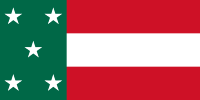Mexican immigration to Cuba
| Total population | |
|---|---|
| 2,752 (2010)[1] | |
| Regions with significant populations | |
| Havana | |
| Languages | |
| Spanish | |
| Religion | |
| Roman Catholicism and Protestantism | |
| Related ethnic groups | |
| Mexicans of European descent, Indigenous peoples of Mexico, Mestizos in Mexico |
Mexican immigration to Cuba comprises people who emigrated from Mexico to Cuba and their descendants. Cuba has the most Mexicans living in the Caribbean. The waves of migration from Mexico to Cuba started from 1970s, as they were attracted by a mild climate and political stability that characterizes this country.
Cuba is a neighboring country where the resident Mexican embassy of Mexico reported 2,752 citizens in 2010, but estimates approximately 4,000 Mexican citizens crossing into the neighboring country for educational, business, commercial, industrial and tourist activities. The Mexican community has been primarily established in the city of Havana.
A countless number of people from Yucatán, Campeche, Quintana Roo, Veracruz, the capital, Jalisco and Tamaulipas share ties of familiarity with the Cubans following the caste war and industrial trade Porfiriato that drove many Mexicans to migrate to the neighboring island. The new openings the Cuban government has made concerns resident aliens in 2011, has allowed many Mexicans decide to reside in the island of Cuba, which has increased the number of citizens in earlier decades. Mexicans in Cuba numbered 826 in 2005.[2]
History
The Mayans were separated from their work, and they surreptitiously left with fugitive status prosecuted by the local authority. On the other hand, there were inherited debts, so that the children had to pay what the father could not have covered. This created a pattern, perpetuating dependence on the family and as the father came close to paying off his debt, the landowner was allowed to trade with their workers, selling the slave market in Cuba.[3]
Thus, entire families were indigenous human chains moved in from the mainland to the island. Under these conditions they lived and suffered, especially many Mayans of Yucatán in the mid-nineteenth century.[4][5] Most were brought to Havana but others were brought to Cuba as farmers of sisal, sugarcane and fodder in the provinces of Pinar del Río, Matanzas and Camagüey.
Mexican communities
 Yucatecans
Yucatecans
The Yucatecans, the largest Mexican community on Cuban soil, are distributed in Havana, Pinar del Río and Matanzas. This community arrived in Mexico from the Spanish colonial period, slavery was brought to the island to work the sugar plantations. Maya Spanish, as well as the Caste War in the nineteenth century. Migration was reduced from Yucatán in the twentieth century. The majority of the Korean diaspora in Cuba are descendants of immigrants from Yucatán.
Statistics
| Census Year | Mexican residents |
|---|---|
| 2000 | 520 |
| 2005 | 826 |
| 2010 | 2,752 |
See also
References
- ↑ Instituto de los Mexicanos en el Exterior 2010
- ↑ Investigación de la Migración Internacional en Latinoamérica (IMILA).
- ↑ Carlos R. Menéndez, "Historia del infame comercio de indios en Yucatán", 1922, Mérida, Yucatán
- ↑ John Kenneth Turner, México Bárbaro, 1965, Costa Amic editores, México, D.F.
- ↑ Nelson Reed, The Caste War of Yucatan, Stanford University Press, 1964